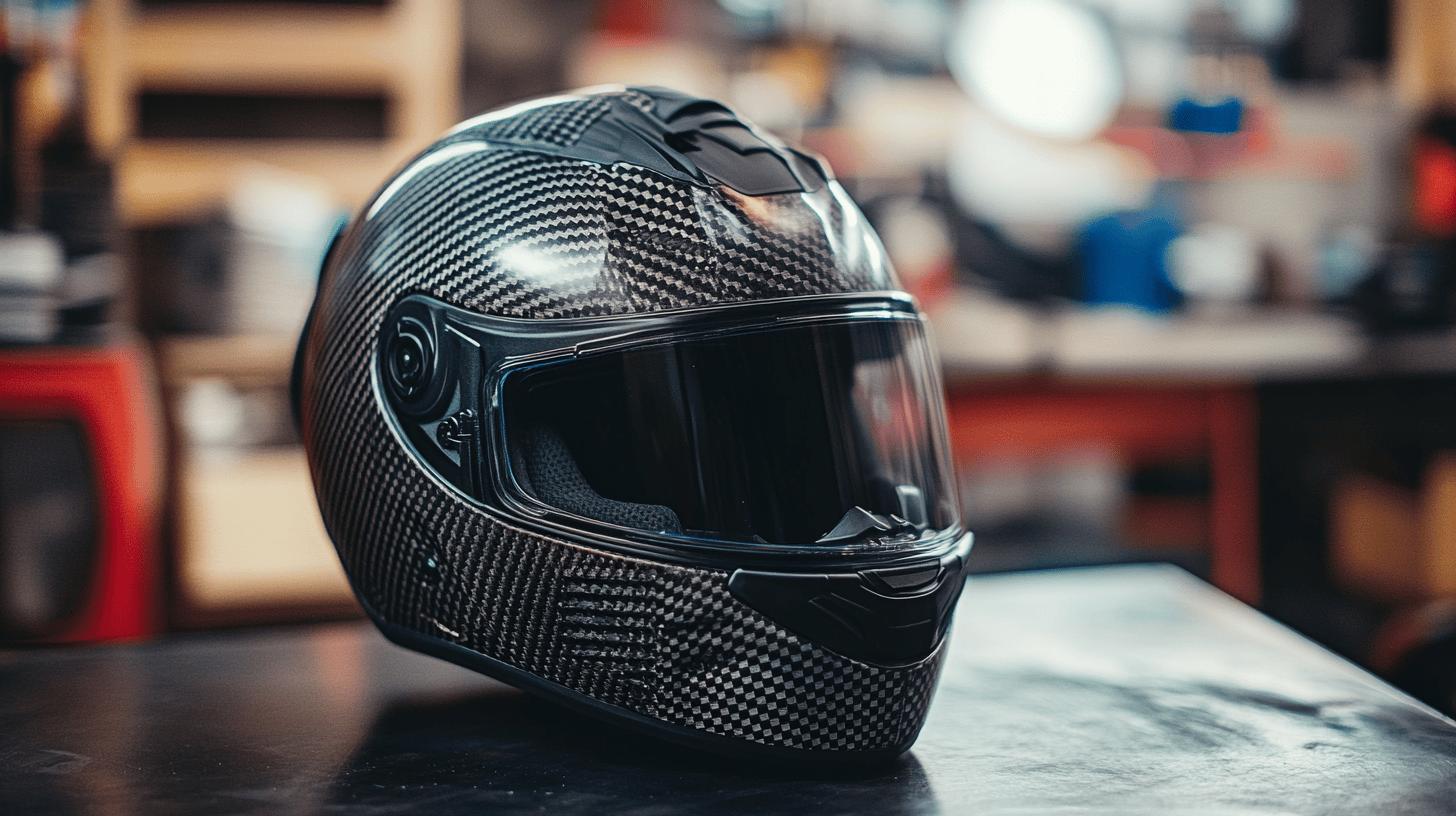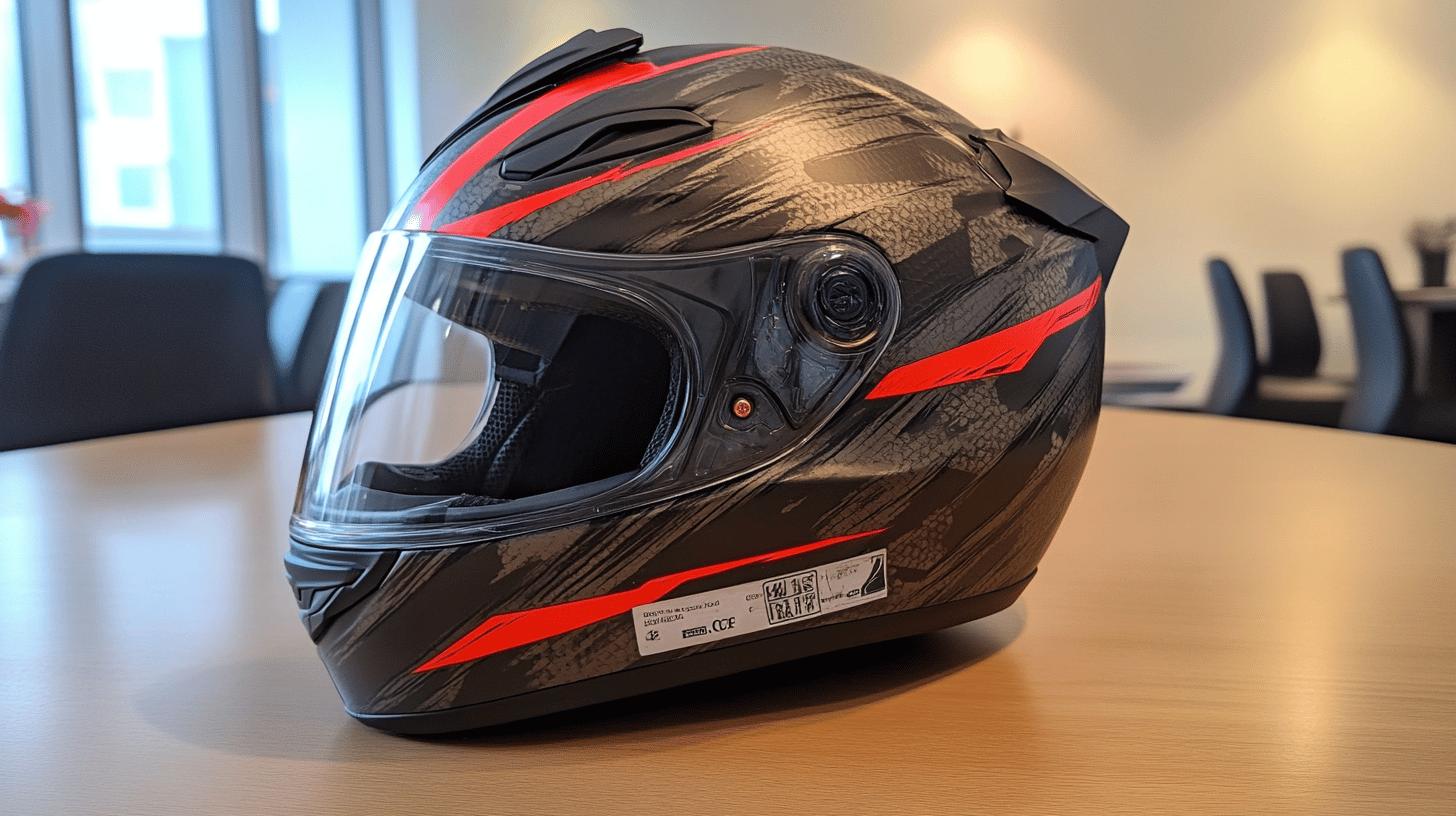Is neck fatigue dampening the thrill of your dual sport rides? A couple of pounds off your helmet could make a world of difference in comfort and maneuverability.
Riders are buzzing about the lightest dual sport helmets that redefine what’s possible on the road. We'll explore options that promise not just lightweight ease, but also uncompromised safety and style.
Curious if less weight means more freedom for you? Dive in to discover the top contenders and what real riders have to say about their performance and comfort.
Understanding the Lightest Weight Dual Sport Motorcycle Helmet

Helmet weight plays a crucial role in rider comfort and performance. A lighter helmet reduces neck strain and enhances maneuverability, making long rides more enjoyable. Among dual sport helmets, the Arai XD4 is often highlighted as the lightest, weighing approximately 3.6 pounds.
It is renowned for its comfort and high-quality construction. Other notable contenders include the Klim Krios Pro, which weighs in at 3.3 pounds, and the Bell MX-9 Adventure at 3.74 pounds. These helmets not only offer reduced weight but also provide a balance of protection and performance.
| Helmet Model | Weight | User Highlights |
|---|---|---|
| Arai XD4 | 3.6 lbs | Comfort, quality construction |
| Klim Krios Pro | 3.3 lbs | Lightweight, enhanced durability |
| Bell MX-9 Adventure | 3.74 lbs | Affordability, lightweight design |
User reviews frequently underscore the advantages of these lightweight helmets, particularly in terms of comfort and ease of use. Riders appreciate the reduced neck fatigue and improved handling that come with a lighter helmet.
Additionally, these helmets often enhance the riding experience through better aerodynamics, which contributes to both speed and comfort. This combination of features makes lightweight dual sport helmets a preferred choice for many riders who spend extensive time on the road.
Key Features of Dual Sport Motorcycle Helmets

Dual sport motorcycle helmets are designed to offer versatility and protection across various riding conditions. These helmets must balance the needs of both on-road and off-road riders, providing a blend of safety, comfort, and durability. Several key features make them suitable for this purpose, from the materials used to the protective elements integrated into their design.
Materials and Design
What materials are commonly used in dual sport helmets? The use of carbon fiber, fiberglass, and polycarbonate is prevalent in reducing helmet weight while maintaining structural integrity. Carbon fiber is especially noted for its lightweight properties and strength, making it a popular choice for high-performance helmets.
Fiberglass offers a balance of weight and cost, providing adequate protection without significantly increasing the helmet's heft. Polycarbonate, although heavier than carbon fiber, is favored for its affordability and impact resistance. These materials are meticulously crafted into aerodynamic shapes that reduce drag and improve stability at higher speeds.
Impact Protection
How do dual sport helmets protect riders? Impact protection is a critical feature, achieved through multi-density EPS (Expanded Polystyrene) liners and reinforced chin straps. EPS liners are designed to absorb the energy from impacts, reducing the force transmitted to the rider's head. The use of multi-density foam layers allows for more effective dispersion of energy across different impact scenarios.
Reinforced chin straps add another layer of safety, ensuring that the helmet remains securely in place during a crash. These components work together to provide robust protection, meeting or exceeding safety standards required for dual sport helmets.
Ventilation Systems
Why is ventilation important in dual sport helmets? Advanced ventilation systems are crucial for maintaining comfort during long rides. These systems are designed to optimize airflow, reducing heat buildup inside the helmet.
Strategically placed vents allow air to circulate efficiently, expelling hot air and bringing in fresh air. This not only keeps the rider cool but also helps to prevent visor fogging, enhancing visibility.
Proper ventilation is particularly important for dual sport riders who may transition between different environments, from cool highways to hot off-road trails. By focusing on these critical features, dual sport helmets provide a comprehensive solution for riders seeking both protection and comfort.
Benefits of Lightweight Helmets for Dual Sport Riders

Why do riders favor lightweight helmets? Lightweight dual sport helmets significantly enhance the riding experience by minimizing neck strain and boosting maneuverability. When helmet weight is reduced, riders feel less fatigue, especially during prolonged journeys.
This reduction in strain allows for greater focus and responsiveness, crucial for handling the diverse terrains encountered by dual sport enthusiasts. Lightweight designs also contribute to improved aerodynamics, which can increase speed while reducing wind resistance.
-
Reduced fatigue: Lighter helmets decrease the physical burden on the neck and shoulders.
-
Enhanced speed: Streamlined designs aid in faster travel by decreasing drag.
-
Improved aerodynamics: Sophisticated shapes optimize airflow around the helmet.
- Increased comfort: Less bulk means easier head movements and better balance.
How do these advantages affect long rides? On extended trips, the benefits of a lightweight helmet become even more apparent. Riders report feeling more comfortable and less encumbered, allowing them to enjoy the ride rather than focusing on discomfort.
The enhanced aerodynamics not only facilitate smoother rides but also contribute to better fuel efficiency. As a result, lightweight helmets are a top choice for dual sport riders who prioritize both performance and comfort on their adventures.
Comparing Pricing and Value of Lightweight Dual Sport Helmets

What is the general price range for lightweight dual sport helmets? Prices typically span from $200 to over $700. This wide range is influenced by several factors, including the brand reputation, materials used in construction, and the features offered.
Higher-end models often incorporate advanced materials like carbon fiber, which contribute to both reduced weight and increased cost. Conversely, more budget-friendly options may utilize polycarbonate, balancing affordability with essential safety features.
-
Brand: Renowned brands tend to command higher prices due to their reputation for quality and innovation.
-
Material: Premium materials such as carbon fiber or fiberglass increase helmet costs due to their durability and weight-saving properties.
-
Features: Additional features like integrated communication systems, advanced ventilation, and customizable fit options add to the overall price.
How does perceived value compare to actual cost? Riders often weigh the perceived value of a helmet against its price tag. While lighter helmets might be less durable, they offer significant advantages in comfort and usability, which many riders find invaluable.
The actual cost of a helmet should be measured not just in dollars but in the benefits it provides over time, such as reducing fatigue and enhancing the riding experience. High-quality helmets that offer a longer lifespan and advanced safety features can be seen as a worthwhile investment, even at a higher initial cost.
What are some tips for buying a motorcycle helmet within a budget? When selecting a helmet, consider these key points:
-
Assess your riding needs to determine which features are essential versus optional.
-
Compare helmets from different brands to find the best combination of price and features.
-
Look for sales or discounts on last season's models, which can offer substantial savings without sacrificing quality.
Considering these factors ensures that you choose a helmet that provides both value and performance without exceeding your budget.
Finding the Right Fit and Comfort in Dual Sport Helmets

What makes a properly fitting helmet so important? A well-fitted helmet is critical for both safety and comfort. It ensures that the helmet stays securely in place during a ride and provides optimal protection in the event of an accident.
An ill-fitting helmet can cause distractions, reduce effectiveness in a crash, and lead to discomfort over long rides. Manufacturers provide sizing guides to help riders select the correct size, emphasizing the importance of trying on helmets before purchase.
-
Measure your head circumference using a flexible tape measure around the widest part of your head, about one inch above your eyebrows.
-
Refer to the helmet brand's sizing chart to find the size that matches your measurement.
-
Try on the helmet, ensuring it fits snugly without causing pressure points, and verify that it doesn't move excessively when you shake your head.
How do helmet features enhance comfort? Padding, adjustable straps, and interior liners play a significant role in maximizing comfort. High-quality padding conforms to the shape of the rider's head, providing cushioning and reducing pressure points.
Adjustable straps allow for a customized fit, ensuring the helmet remains stable and comfortable throughout the ride. Interior liners wick away moisture, keeping the rider cool and dry. These elements combine to enhance the riding experience, making it both safer and more enjoyable.
Safety Ratings and Standards for Dual Sport Helmets

Why are safety ratings crucial for motorcycle helmets? Safety standards such as DOT (Department of Transportation) and ECE (Economic Commission for Europe) provide essential benchmarks for helmet safety, ensuring they meet minimum impact protection requirements.
These ratings are crucial for dual sport helmets as they guarantee that the helmet can withstand various impact scenarios, providing necessary protection for riders.
What tests do helmets undergo to achieve these certifications? Helmets are subjected to rigorous safety tests that evaluate their performance under different conditions. These tests include impact absorption, penetration resistance, and retention system effectiveness.
For a helmet to achieve DOT or ECE certification, it must demonstrate the ability to protect the rider's head during high-impact situations, ensuring the helmet remains intact and secure. These assessments are integral to affirming a helmet's suitability for both on-road and off-road use, providing riders with confidence in their protective gear.
Final Words
Diving into the nuances of dual sport motorcycle helmets reveals that weight plays a critical role in rider comfort and performance. With models like the Arai XD4 and Klim Krios Pro leading the pack in terms of lightness, riders enjoy reduced neck strain and enhanced maneuverability.
Understanding materials and design, alongside safety ratings, aids in selecting the optimal helmet. Ultimately, finding the perfect blend of weight, comfort, and safety is the key to a superior riding experience with the lightest weight dual sport motorcycle helmet.
FAQ
What is the lightest dual sport motorcycle helmet for 2024?
The Klim Krios Pro is noted as the lightest dual sport helmet for 2024, weighing approximately 3.3 pounds. Its lightweight design offers reduced neck strain and improved maneuverability for enhanced rider experience.
Are dual sport helmets good for street riding?
Dual sport helmets are suitable for street riding, providing a balance of protection and airflow. They offer versatility for both on and off-road use, making them a popular choice among diversely skilled riders.
How much does a lightweight helmet weigh?
A lightweight dual sport helmet typically weighs between 3.3 to 3.74 pounds. This weight range helps reduce rider fatigue and enhances comfort, especially during long rides.
What are the best features of dual sport motorcycle helmets?
Dual sport motorcycle helmets are crafted from carbon fiber, fiberglass, and polycarbonate, featuring multi-density EPS liners, reinforced chin straps, and advanced ventilation for optimal safety and comfort.
Why do lightweight helmets benefit dual sport riders?
Lightweight helmets reduce neck strain, improve maneuverability, enhance aerodynamics for better speed, and increase overall comfort, making them ideal for dual sport riders tackling long journeys.
How do prices vary for lightweight dual sport helmets?
Prices for lightweight dual sport helmets range from $200 to over $700, influenced by brand, materials, and features. Premium materials and advanced features generally command higher prices but may offer less durability.

Ryan Thompson is a 35-year-old sport bike enthusiast known for his adventurous spirit. With years of weekend rides and exploring new roads, Ryan brings fresh insights and firsthand experience to ProtectiveGearz. His energetic approach and passion for the latest gear make him a trusted source for riders seeking up-to-date advice.



